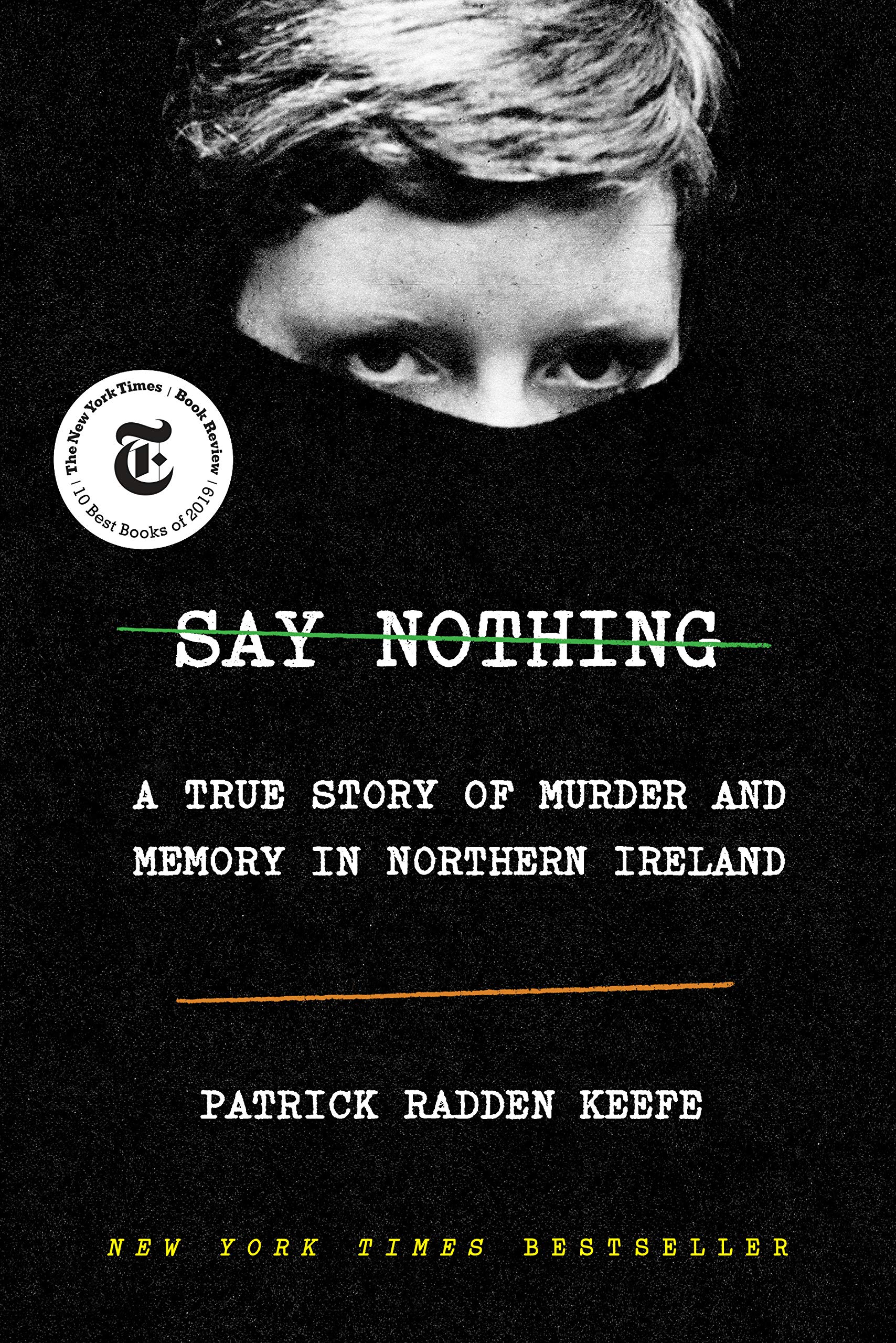Patrick Radden Keefe’s Say Nothing: A True Story of Murder and Memory in Northern Ireland is a murder mystery political history. Keefe opens with a scene of two Northern Irish detectives from the Serious Crime Branch in Belfast striding into the Treasure Room at Boston College’s John Jay Burns Library. They’ve come to retrieve recordings of former Irish Republican Army volunteers recounting the history of the Troubles and their paramilitary organization. It’s 2013 and those interviews have become evidence in the 1972 “disappearance” of Jean McConville.
Jumping the Atlantic and cycling back four decades, Keefe drops readers behind a gang of balaclava-clad IRA foot soldiers entering a West Belfast public housing complex. Readers witness their bumrushing the McConville apartment and initiating the irrevocable ruin of that family. Mrs. McConville, a mother of ten who’d recently become a widow, was likely disappeared for having offered aid to a British soldier who’d been wounded just outside the family’s apartment block during a skirmish with IRA. Twenty-five years would pass before the IRA admitted that they executed McConville. Not until 2003, when her remains appeared on a beach in Irish Republic, were the McConville children finally able to lay their mother to rest.
In between Mrs. McConville’s abduction and final identification, Keefe builds a history of the struggle for Irish liberation from Britain, a story about independence and partition, colonial hang-ups and post-colonial dreams, Ulster Loyalist Protestant nationalism and Irish Republican Catholic radicalism. And thus, as with many independence movements and extended civil wars, Keefe’s narrative is a history of violence.
Shifting smoothly among scenes with explosive, thriller-like pacing and deeply engrossing psychological profiles of central political characters, Keefe takes us from the ambush at Burntollet Bridge in 1969 to Bloody Sunday in ‘72 to the 1973 bombing of the Old Bailey Courthouse in London to Dolours Price, Brendan Hughes, Bobby Sands and the Hunger Strikes of ‘80-81 to Margaret Thatcher to the political legitimization of Sinn Féin to Gerry Adams’ deradicalization and disavowal of IRA membership to the Good Friday Agreements in 1998.
The author arranges these jigsawed complexities of late twentieth-century political struggle into an essential examination of the contradictions between the IRA’s liberation theory and its sometimes demagnetized moral compass. Working with the tapes in BC’s Treasure Room, Keefe presents some former IRA activists, especially Price and Hughes, as unrepentant about political violence and simultaneously remorseful about the existential and physical expense of the warrior ethic. That remorse turns to rage when they recognize Adams’s politically expedient distancing as the devaluation and erasure of the IRA’s political agenda. What was all the killing for except liberation and unification?
— Walton Muyumba


 Say Nothing: A True Story of Murder and Memory in Northern Ireland by Patrick Radden Keefe (Doubleday)
Say Nothing: A True Story of Murder and Memory in Northern Ireland by Patrick Radden Keefe (Doubleday) 